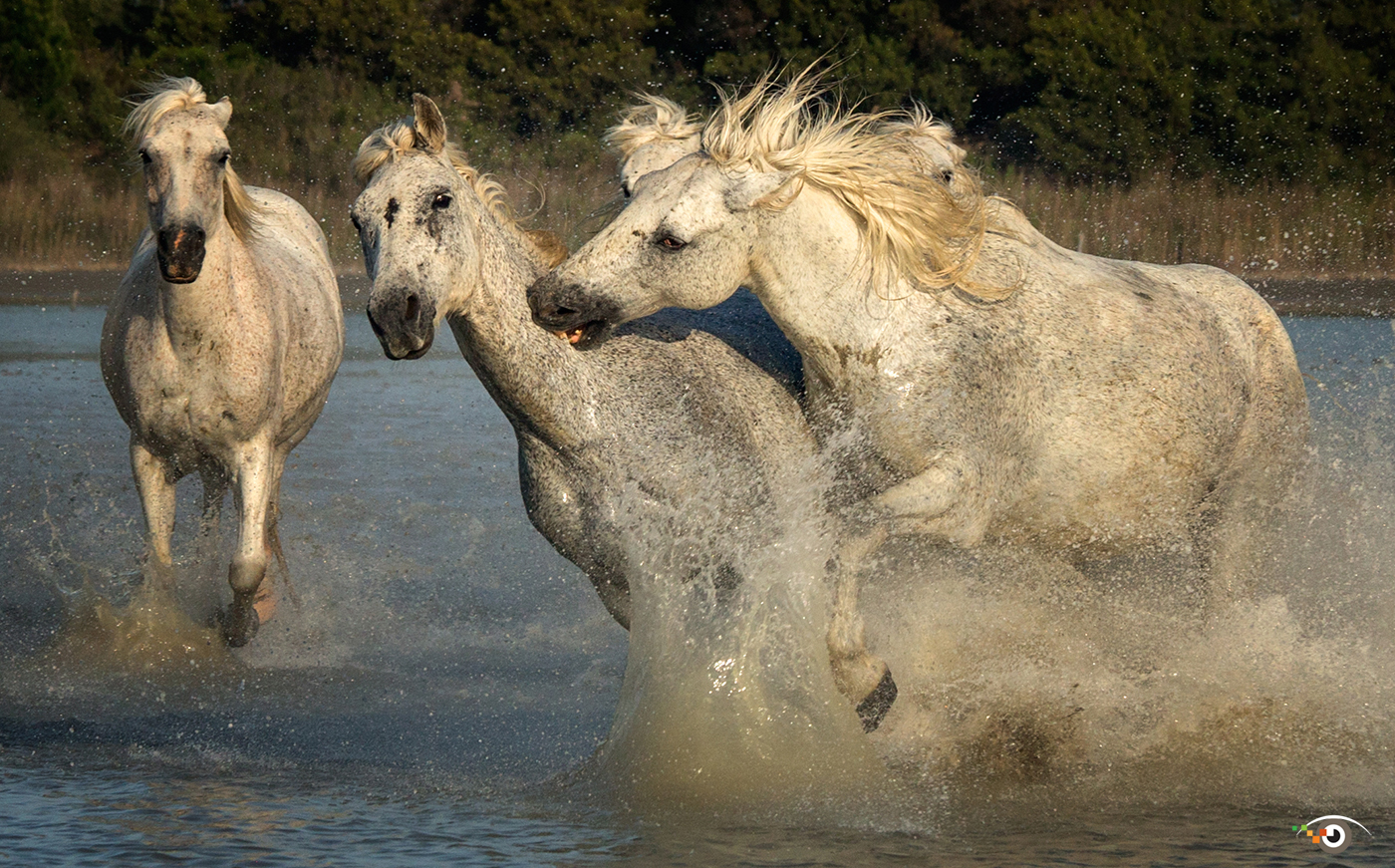My friends: Do you suffer from OCD - Obsessive Cropping Disorder? If so, you're not along. I have OCD, too.
But for me, it gets worse. When I send my cropped images off to a book or magazine publisher, I attached the accompanying note: Crop my pictures and you're a dead man! :-)
All kidding aside, I stress the importance of not cropping off a single pixel from one of my images.
Sure, I try to get it right in camera, but somethings, especially with action photography, that is just not possible. What's more, I want the largest possible image area with which to work, so I can make the largest possible print with the least amount of noise. When I do get some noise, I reduce it with Topaz DeNoise - my favorite noise-reduction plug-in.
OCD has afflicted me for years, but in going through my Provence Camargue horse images to share with those joining my 2015 Provence Photo Workshop, I realized the seriousness of the situation. I am sharing my favorite images here as a kind of OCD group therapy.
For example, take the opening image for this post. It was cropped from the image below.
OCD kicked in immediately when I viewed the image on my camera's LCD monitor: the small clusters of horses (with their butts cut off) on the left had to go.
Master photographer Edward Weston said, "Composition is the strongest way of seeing." I agree 100% - which is why I named my KelbyOne class, Composition - the strongest way of seeing.
Cropping, I feel, gives us a second chance at composition. The image of the horses above was cropped from the image below.
Again, when I looked at the image on my camera's LCD monitor, I envisioned a much tighter crop.
Cropping, like composition, is subjective. My original crop was just one idea. Above is another. It's a better crop, I feel, if you are looking for a behind-the-scenes image. It tells a different story, simply by way of a different crop.
Above is yet another crop. The idea: Look for an image within an image.
When I open a photograph in Lightroom or Photoshop (both of which I teach on my workshops), the first thing I do is crop. OCD usually kicks in because I am usually looking for an image with impact. I feel the image above has more impact than the uncropped version below. That said, there is something to be said for negative space.
Another crop might be a tight vertical, as shown below on the right. That would make a perfect bookmark, or a nice print for a narrow space.
Some photographers might think that OCD presents a challenge when it comes to printing an image - because the image will not fit into a standard (8x10, 11x14, etc.) mat or frame. But that's not a big deal. It just requires a bit of added creativity.
The image above was cropped from the image below.
I had a custom mat and frame made by American Frame for a custom print that I had made by Adorama Pix.
AdoramaPix, in fact, is one of the few labs I have found that will print an image exactly to my specifications. AdoramaPIx does not trim a print. Rather, the image comes printed on a standard size piece of paper with white space surrounding the image area - hence the creative step of making a custom mat.
So my fellow OCD "suffers," crop away. Think like a painter: only include on your "digital canvas" the elements in a scene that are important to tell a story - your story.
I hope to see you on one of my Creative Visualization Workshops - where we visualize the end result, which often includes cropping - as illustrated in the image above, which is cropped to the movie-screen format.
In a future post I will discuss OSS - Over Sharpening Syndrome. I don't have it, but I have seen many examples of it.
Explore the light,
Rick












